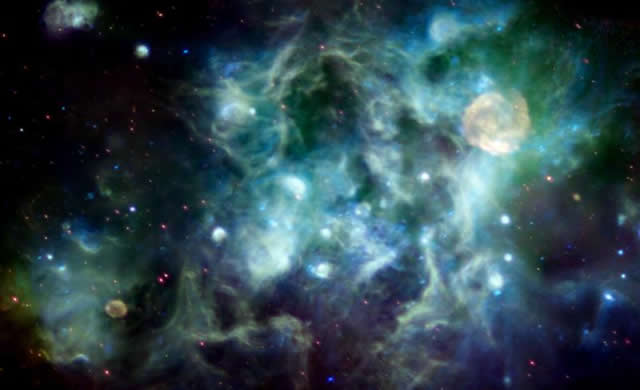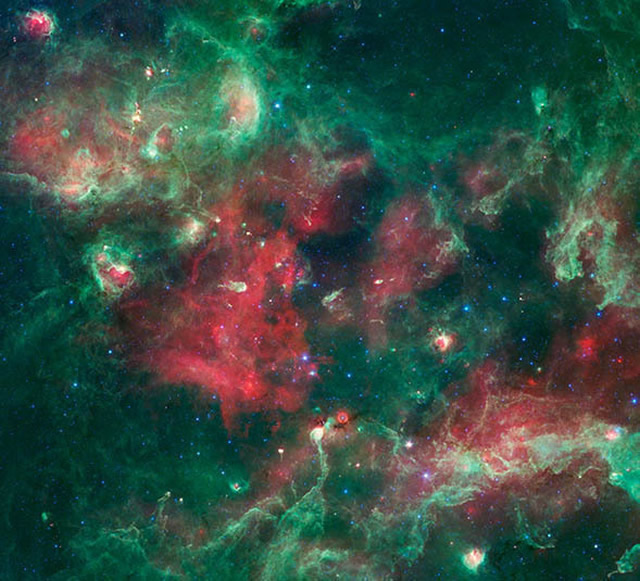
Le stelle che vediamo oggi non sono state sempre così tranquille come appaiono ora fluttuare da sole nel buio della notte. La maggior parte delle stelle, probabilmente compreso il nostro Sole, sono cresciute in un tumulto cosmico, come illustrato da questa immagine fornita dal telescopio spaziale Spitzer della NASA. L’immagine mostra Cygnus X, una delle regioni più attive e turbolente nella nostra galassia, la Via Lattea, dove nascono le stelle.
La nube discontinua di gas e polveri si trova a 4.500 anni luce di distanza nella costellazione del Cigno. È la patria di migliaia di stelle massicce e di molte altre stelle delle dimensioni del nostro sole e anche di più piccole. Spitzer ha immortalato un panorama a infrarossi di tutta la regione spumeggiante di formazione stellare. “Spitzer ha catturato la molteplice attività che si verifica in questa nube violenta di nascita stellare”, ha detto Joseph Hora del Centro Harvard – Smithsonian per l’ Astrofisica di Cambridge, nel Massachusetts, che ha presentato i risultati al meeting 219 della American Astronomical Society ad Austin nel Texas. “Vediamo bolle scavate da stelle massicce, colonne di nuove stelle, filamenti scuri allineati con gli embrioni stellari e molto di più”.

The stars we see today weren’t always as serene as they appear, floating alone in the dark of night. Most stars, likely including our own sun, grew up in cosmic turmoil, as illustrated in this new image from NASA’s Spitzer Space Telescope. The image shows one of the most active and turbulent regions of star birth in our Milky Way galaxy, a region called Cygnus X.
The choppy cloud of gas and dust lies 4,500 light-years away in the constellation Cygnus or the “Swan.” It is home to thousands of massive stars and many more stars around the size of our sun or smaller. Spitzer has captured an infrared view of the entire region, bubbling with star formation. “Spitzer captured the range of activities happening in this violent cloud of stellar birth,” said Joseph Hora of the Harvard-Smithsonian Center for Astrophysics in Cambridge, Mass., who presented the results today at the 219th meeting of the American Astronomical Society in Austin, Texas. “We see bubbles carved out by massive stars, pillars of new stars, dark filaments lined with stellar embryos and more.”
Source/Continue reading → www.spitzer.caltech.edu





















